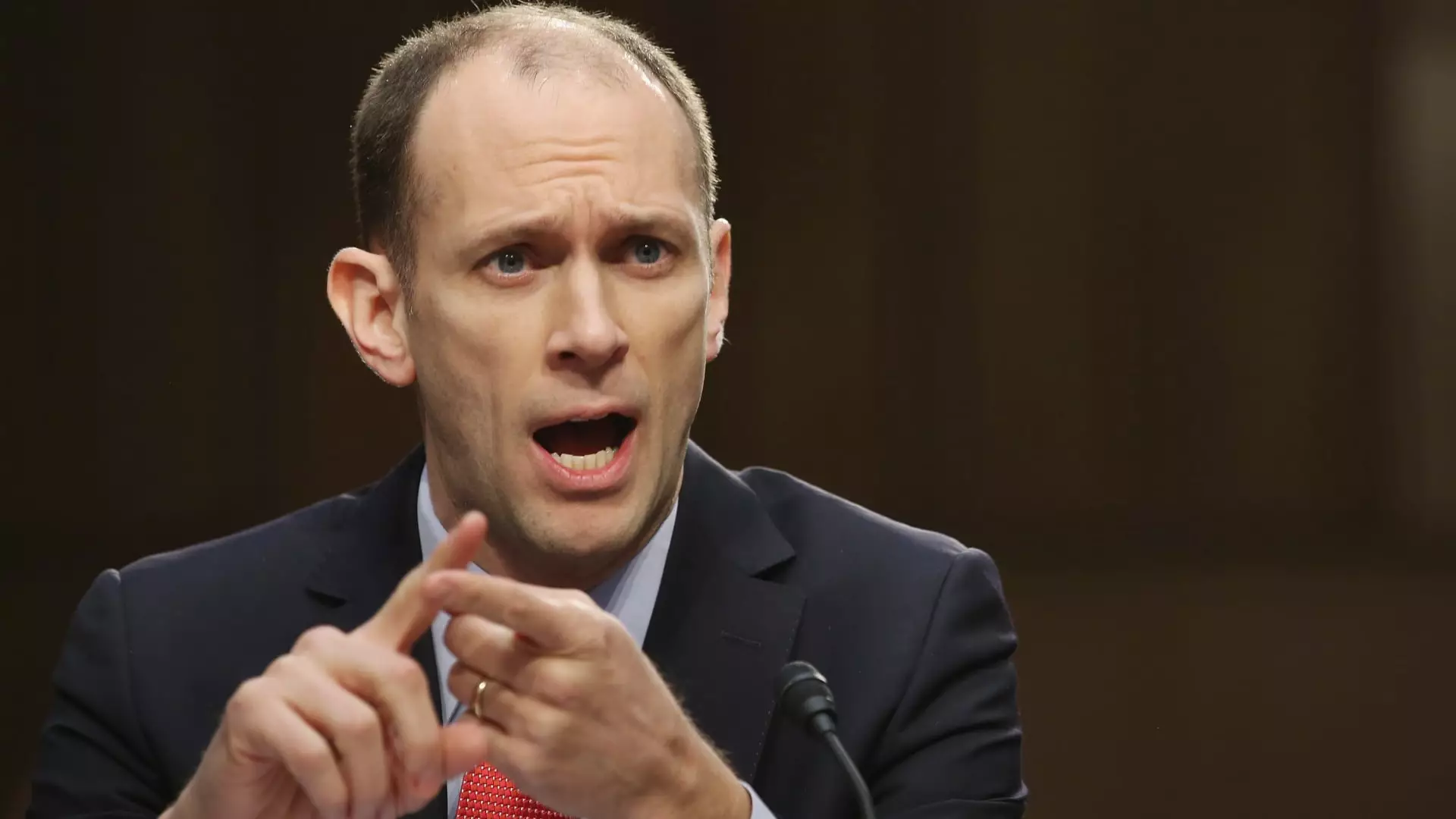In a perplexing economic landscape, an unsettling sense of anxiety has begun to envelop business temperatures across the Midwest. Austan Goolsbee, President of the Chicago Federal Reserve, recently conveyed the fraught sentiments echoing through corporate corridors, wherein rising tariffs and fiscal policies have instilled a pervasive unpredictability. His reflections illuminate a critical dichotomy within the economy: a combination of the potential for interest rate cuts juxtaposed against an increasing cloud of uncertainty. In a world where corporations are now pausing pivotal capital expenditure endeavors, Goolsbee’s assertions beg the question: how long can such uncertainty be tolerated before it spirals into a more debilitating paralysis?
The ongoing conversations with business leaders reveal a significant pivot in tone — shifting from optimistic growth forecasts to cautious trepidation, especially in the face of erratic tariff policies. This isn’t merely a matter of corporate hesitance; it’s indicative of a larger societal ripple effect. The Federal Reserve’s choice to maintain interest rates signals an intent to stabilize; yet, is this stabilization reactive rather than proactive? Waiting for clarity on tariffs may provide short-term solace, but it also risks entrenching a cycle of stagnation that could derail long-term economic health.
The Tug-of-War Between Tariffs and Growth
Tariffs, as Goolsbee aptly remarked, can instigate a stagflationary impulse; they hold the potential to elevate prices while simultaneously choking economic output. The Federal Reserve seems to acknowledge this tension, but it stubbornly refuses to name the beast. Are we truly on the brink of stagflation, or is this a false alarm echoed in the corridors of policy discussion? The unemployment rate hovers just above 4%, and inflation remains contained within manageable bounds. However, the very definition of stagflation, characterized by slow growth and rising prices, lurks in the shadows of policymakers’ fears.
With a strong backdrop of low unemployment, one might argue that the fundamental indicators of economic robustness appear sound. Still, it is impossible to gloss over the discomfort of incremental tightening, which raises more questions than it answers. Should we dismiss Goolsbee’s cautionary notes as mere echoes of conservative Fed speak, or should they serve as valid warnings against the naivety of perceived stability? In an atmosphere dripping with uncertainty — punctuated by recent mixed economic data — the lack of confidence among business stakeholders becomes the starkest signal of all.
Making Sense of the Fed’s Dilemma
The Federal Reserve, under the leadership of Chair Jerome Powell, has clearly articulated its recognition of the burgeoning uncertainty around economic trends. When the phrase “policy uncertainty” lingers in the air, it’s a clarion call for caution that resonates far beyond the confines of Madison Avenue. Indeed, the Fed’s latest pronouncement maintaining rates in the 4.25%-4.5% range underscores the conundrum of navigating a complex – and often contradictory – economic environment.
Interestingly, while Goolsbee implies a hopeful trajectory for potential rate cuts within an 18-month horizon, the implied pessimism underscores a fundamental concern over the nature of how quickly markets could rebound from current instability. Meanwhile, the market data reflects a more aggressive outlook, anticipating three quarter-point cuts instead of two. Such a discrepancy could indicate a divide in perception between Fed leadership and market reality, one that could further stale economic momentum.
The question that looms large is whether this divergence between the Fed’s cautious optimism and the market’s aggressive projections will result in policy missteps. As Goolsbee navigates these turbulent waters, he must remain vigilant against the temptation to succumb to complacency resulting from historically low unemployment and manageable inflation metrics.
Future Outlook: Navigating an Uncertain Path
Goolsbee’s insights about the shifting mood among business leaders and heightened policy uncertainties serve as a reminder of the fragility underlying our economic system, one that is deeply influenced by external factors ranging from tariffs to tax reforms. As the Fed employs a wait-and-see approach while trying to make meaningful sense of inflation trends, they are also tasked with managing the collective anxiety of the business community, whose decisions are pivotal for sustained growth.
The reality is that while interest rate cuts may pave the way for buoyed market confidence, Goolsbee’s wariness underscores how fragile that confidence can be in the face of rising tariffs and uncharted fiscal policies. Dialogue has shifted from optimism to caution; now the question is how to restore a narrative of stability in a landscape fraught with uncertainty. In the heart of these discussions lies the ultimate test of the Federal Reserve’s capacity to navigate through both political uncertainty and economic disquiet.


Leave a Reply